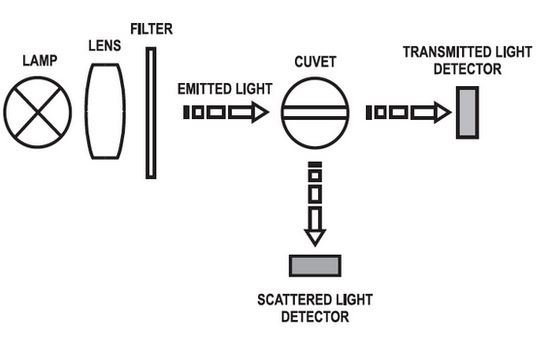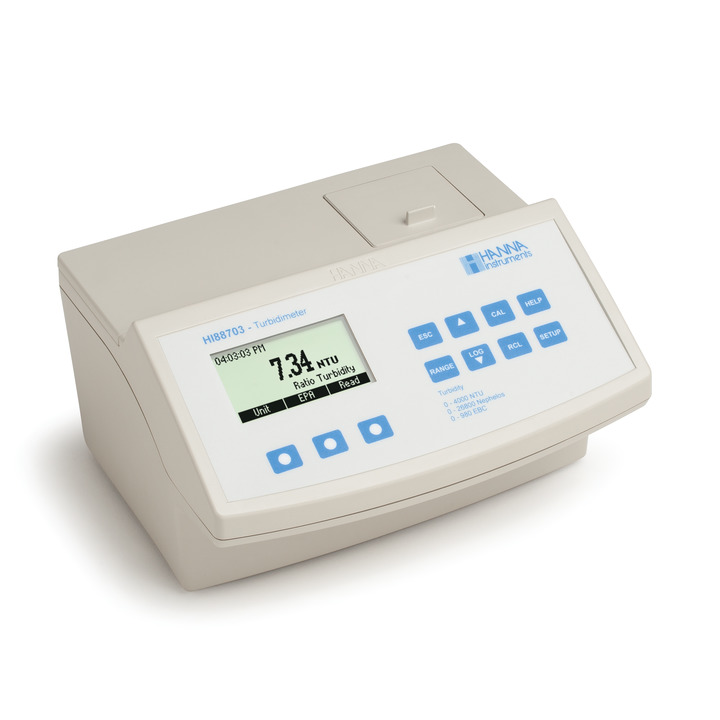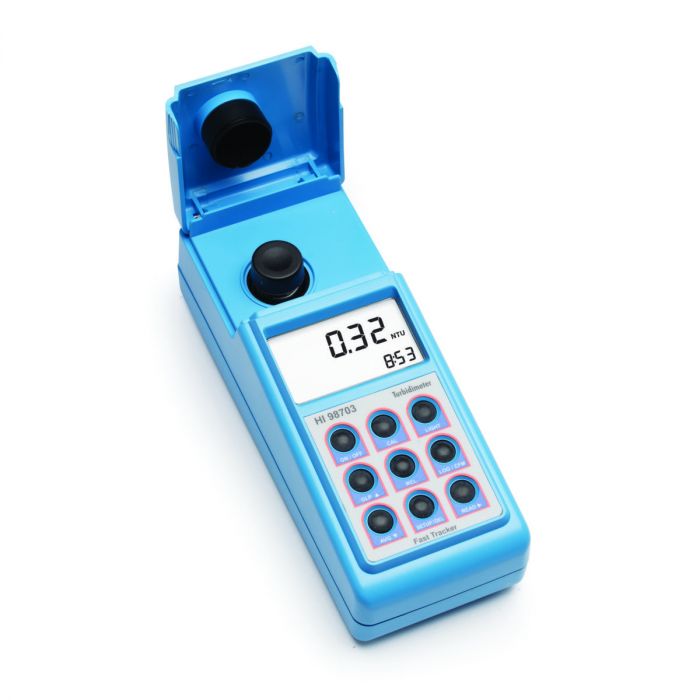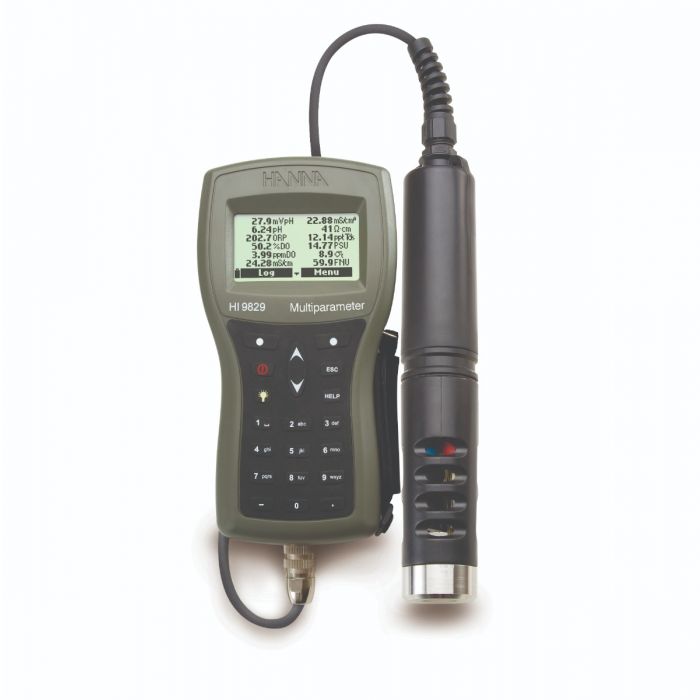Turbidity refers to the decrease in water clarity caused by the presence of suspected matter, which absorbs or scatters downwelling light.
When the concentration of suspected particles become noticeable, the water is considered turbid.
Turbidity refers to the decrease in water clarity caused by the presence of suspected matter, which absorbs or scatters downwelling light.
When the concentration of suspected particles become noticeable, the water is considered turbid.
Inorganic suspended materials not only reduce light penetration but also serve as surfaces for adsorption and desorption and can aggregate with dissolved substances, bacteria and algae.
Turbidity is specifically caused by particles smaller than 1 micron in diameter suspended in the water column, while suspended solids typically range from 10 to 100 microns in diameter.
Turbidity encompasses all the suspended components responsible for clouding the water, and as turbidity increases, visibility and clarity of the water body decrease. This reduction in clarity occurs due to the scattering of sunlight by the suspended particles in the solution. These particles act like small mirrors, redirecting incoming sunlight in various directions, which ultimately reduces light penetration. The figure below illustrates this effect during the passage of light through the sample.
Turbidity should not be confused with color, nor color with turbidity.
Turbidity is normally measured using an electronic device in which a beam of ordinary white light is directed through a certain path length of the sample. Photometers placed at right angles to the direction of travel of the light beam detect the amount of light diverted, which is directly proportional to the turbidity.


There are different measurement standards used based on applications, and with these standards are applied units.
The ISO standard adopted the FNU (Formazin Nephelometric Unit) while the EPA uses the NTU (Nephelometric Turbidity Unit). Other units include the JTU (Jackson Turbidity Unit), FTU (Formazin Turbidity Unit), EBC (European Brewery Convention Turbidity Unit) and diatomaceous earth (mg/L SiO₂).
Turbidity can be classified into different categories based on the NTU or FNU values:
– Low Turbidity:
- NTU/FNU: 0-10
Water appears clear and transparent with minimal or no visible particles
– Moderate Turbidity:
- NTU/FNU: 10-50
Water starts to appear slightly cloudy, and some particles may be visible
– High Turbidity:
- NTU/FNU: 50-100
Water becomes noticeably cloudy, and particles are clearly visible to the naked eye
– Very High Turbidity:
- NTU/FNU: 100-500
Water is significantly turbid, and particles are easily seen, causing reduced visibility
– Extremely High Turbidity:
- NTU/FNU: >500
Water is highly opaque, and particles are densely packed, resulting in very poor visibility
The primary factors contributing to elevated turbidity levels are phytoplankton, erosion, urban runoff, wastewater discharge, algae and sediment disruption.
Below is a more detailed explanation of each of these factors:
Phytoplankton: Phytoplankton are tiny marine algae that have the ability to turn water brownish-red when present in large quantities. These microorganisms drift in water and can survive in both freshwater and saltwater environments.
Erosion: Erosion causes water to become turbid. For instance, when a river flows through an area with loose dirt, the eroded dirt can seep into the water, making it cloudy. Additionally, the force of the flowing river can erode harder materials like rocks, leading to an increased sediment level in the water.
Urban Runoff: Urban runoff, which is rainwater or melted snow flowing through urban areas, can lead to water pollution and contamination of private wells, lakes, and rivers. As water passes through agricultural or industrial sites, building surfaces, and impermeable paved areas, it may pick up sediment that elevates the turbidity of the receiving water source.
Wastewater Discharge: Improperly treated wastewater discharge can introduce pathogens, suspended solids, and other contaminants into bodies of water, raising their turbidity. Such wastewater often originates from factories and wastewater treatment plants. Though guidelines exist for treating wastewater before discharge, not all water sources undergo appropriate treatment.
Algae: Algae are a diverse group of organisms found in both saltwater and freshwater bodies. They come in various sizes and appearances, with some being too small to be visible to the naked eye. Algae consume nutrients from the water, improving oxygen levels. However, when algae die, they release organic matter into the water, increasing turbidity. Some algae attach to the ground’s surface, while others float on the water’s surface.
Sediment Disruption: Similar to erosion, sediment disruption occurs when water carries sediment to new locations, causing localized increases in turbidity, such as in the pool of water below a waterfall. In rivers, this disruption can affect water flow and alter water depth.
Hanna Instruments offers a wide range of turbidimeters:
Benchtop or Portable Instruments
HI88713-02
ISO 7027 Compliant Benchtop Turbidity Meter
The HI88713 is a high accuracy benchtop turbidity meter. The meter is supplied complete with AMCO-AEPA-1 primary turbidity standards used for calibration and performance verification.
The HI88713 meets and exceeds the requirements of the ISO 7027 Method for turbidimetric measurements.
- Compliant to ISO 7027 method
- Ratio and non-ratio turbidity modes
- USB for data transfer
Characteristics:
- Four Measurement Modes
- Multiple Turbidity Units of Measure
- ISO Compliant
- AMCO AEPA-1 Primary Turbidity Standard
- GLP Data
- Data Logging
- Data Transfer
- Tutorial Mode
- Contextual Help
- Backlit Graphic LCD Display
Characteristics:
- Four Measurement Modes
- Multiple Turbidity Units of Measure
- ISO Compliant
- AMCO AEPA-1 Primary Turbidity Standard
- GLP Data
- Data Logging
- Data Transfer
- Tutorial Mode
- Contextual Help
- Backlit Graphic LCD Display
HI88703-02
EPA Compliant Benchtop Turbidity Meter
The HI88703 is a high accuracy (±2% of reading plus 0.02 NTU) Turbidity Benchtop Meter. The meter is supplied complete with AMCO-AEPA-1 primary turbidity standards used for calibration and performance verification.
The HI88703 meets and exceeds the requirements of EPA Method 180.1 and Standard Methods for the Examination of Water and Wastewater 2130 B for turbidity measurements.
- Ratio and non-ratio turbidity modes
- USB for data transfer
- EPA Compliant
Characteristics:
- Two Measurement Modes
- Multiple Turbidity Units of Measure
- EPA Compliant
- AMCO AEPA-1 Primary Turbidity Standard
- GLP Data
- Data Logging
- Data Transfer
- Tutorial Mode
- Contextual Help
- Backlit Graphic LCD Display
Characteristics:
- Two Measurement Modes
- Multiple Turbidity Units of Measure
- EPA Compliant
- AMCO AEPA-1 Primary Turbidity Standard
- GLP Data
- Data Logging
- Data Transfer
- Tutorial Mode
- Contextual Help
- Backlit Graphic LCD Display
HI98703-02
Portable Turbidity Meter
The HI98703 is a high accuracy (±2% of reading plus 0.02 NTU) Turbidity Portable Meter. The meter is supplied complete with AMCO-AEPA-1 primary turbidity standards used for calibration and performance verification.
The HI98703 meets and exceeds the requirements of EPA Method 180.1 and Standard Methods for the Examination of Water and Wastewater 2130 B for turbidity measurements.
The HI98703 Precision Turbidity Portable Meter is specially designed for water quality measurements, providing reliable and accurate readings, especially in the low turbidity range.


The instrument is based on a state-of-the-art optical system which guarantees accurate results, assures long term stability, and minimizes stray light and color interferences. Periodic calibration with the supplied standards compensates for any variations in intensity of the tungsten lamp. The 25 mm round cuvettes composed of special optical glass guarantee the repeatability of turbidity measurements.
HI9829-02
Multiparameter pH/ISE/EC/DO/Turbidity Waterproof Meter with GPS option
The HI9829 is a waterproof portable logging multiparameter meter that monitors up to 14 different water quality parameters.
The microprocessor based multi-sensor probe allows for the measurement of key parameters including pH, ORP, conductivity, dissolved oxygen, turbidity, ammonium, chloride, nitrate, and temperature.
Choose your configuration!
The probe transmits readings digitally with options to log data while disconnected from the meter. An optional GPS provides location tracking of measurements. The complete system is simple to setup and easy to use. The HI9829 is highly customizable and supplied with all necessary accessories, packaged in a durable carrying case.
Turbidity range 0.0 to 99.9 FNU, 100 to 1000 FNU
The probe transmits readings digitally with options to log data while disconnected from the meter. An optional GPS provides location tracking of measurements. The complete system is simple to setup and easy to use. The HI9829 is highly customizable and supplied with all necessary accessories, packaged in a durable carrying case.
Turbidity range 0.0 to 99.9 FNU, 100 to 1000 FNU
Turbidity in
Sugar Production
Have questions?
Contact a Hanna Technical Specialist at info@hannaservice.eu or using our contact form.
SOURCES:
- J.U. Grobbelaar, in Encyclopedia of Inland Waters, 2009
- Himanshu Patel, R.T. Vashi, in Characterization and Treatment of Textile Wastewater, 2015


With Great Products
Come Great Results







